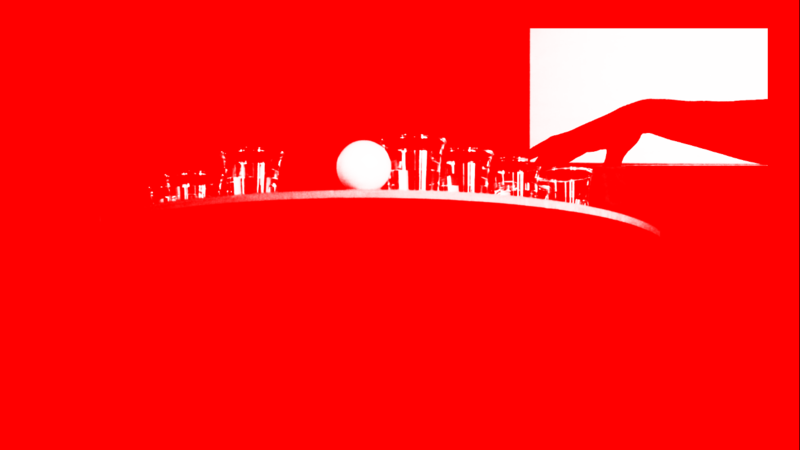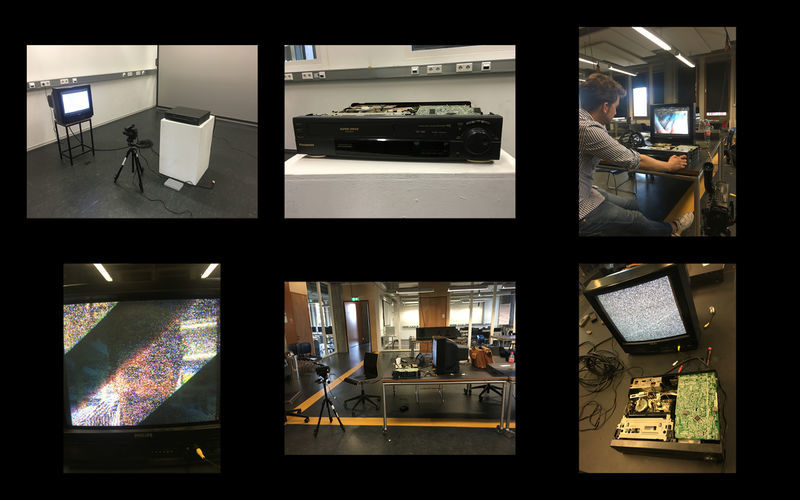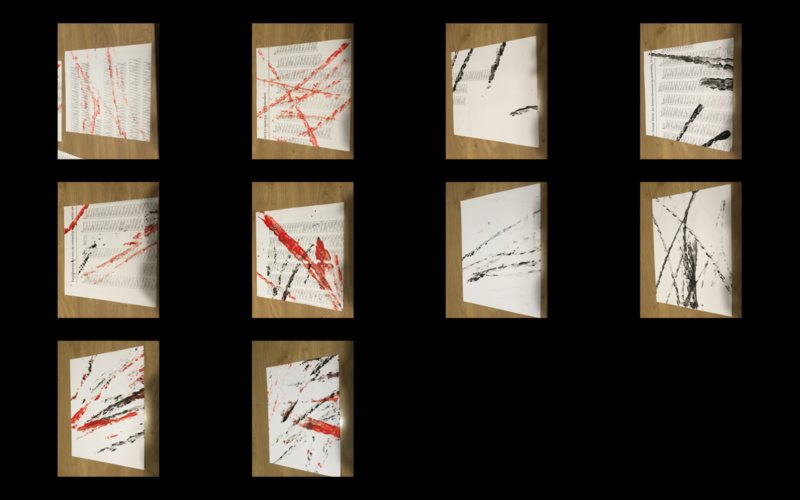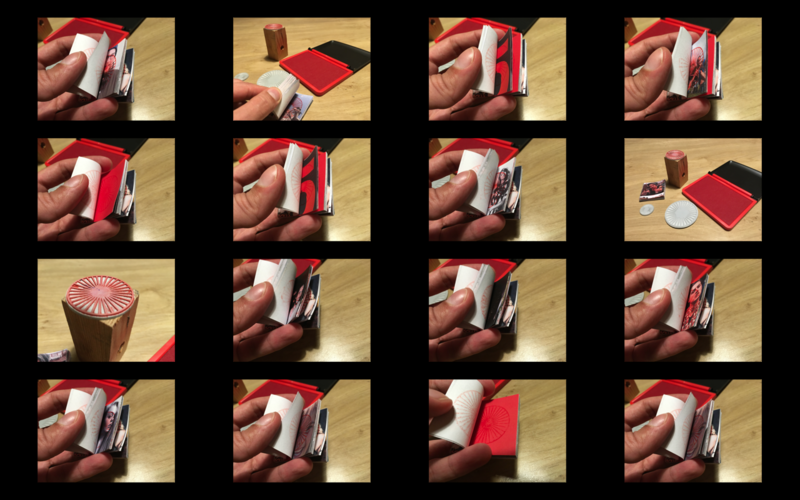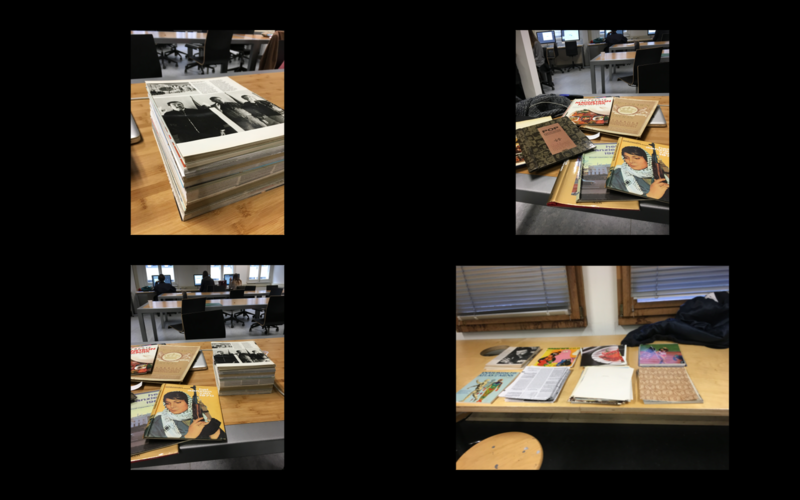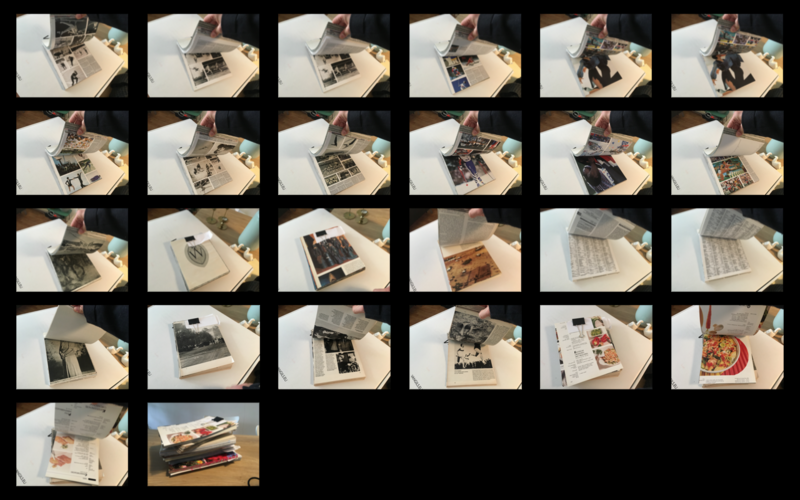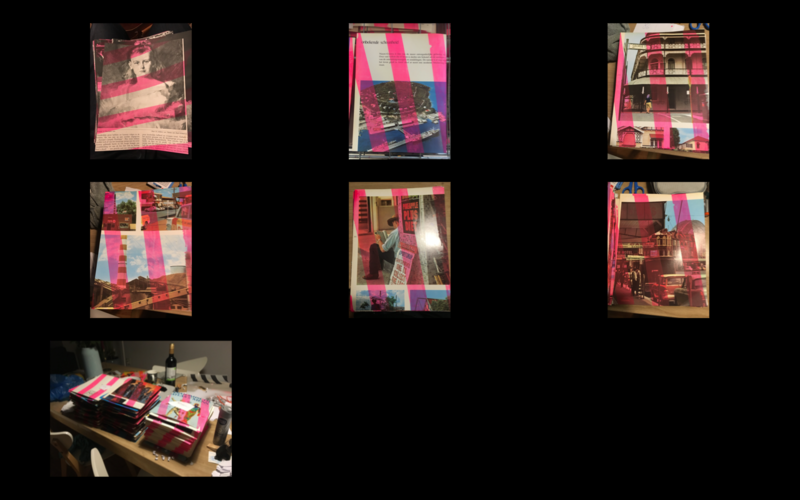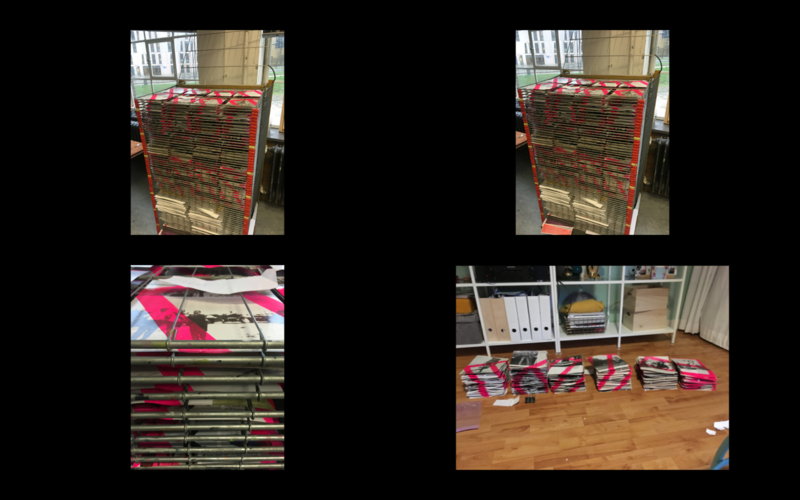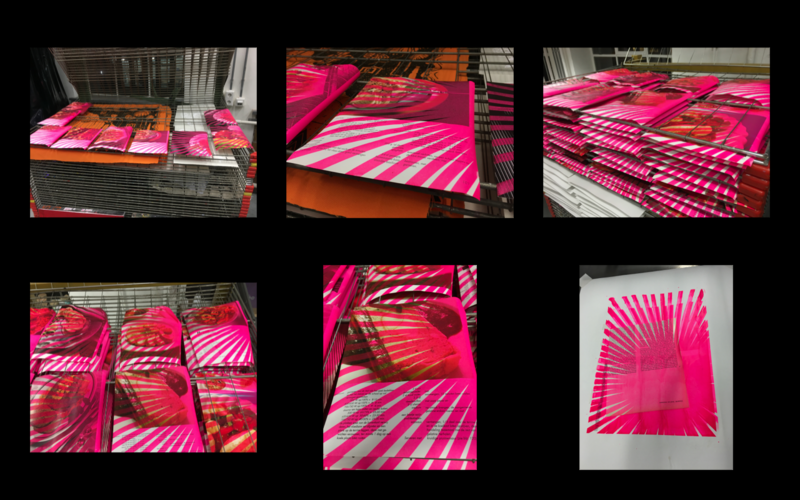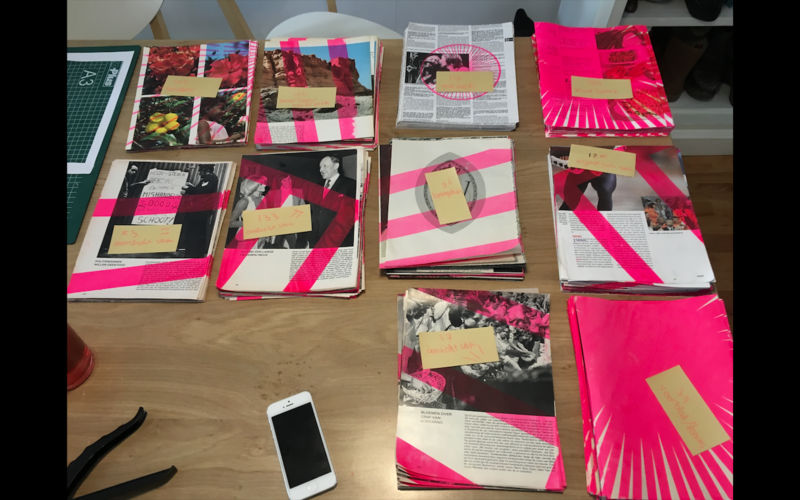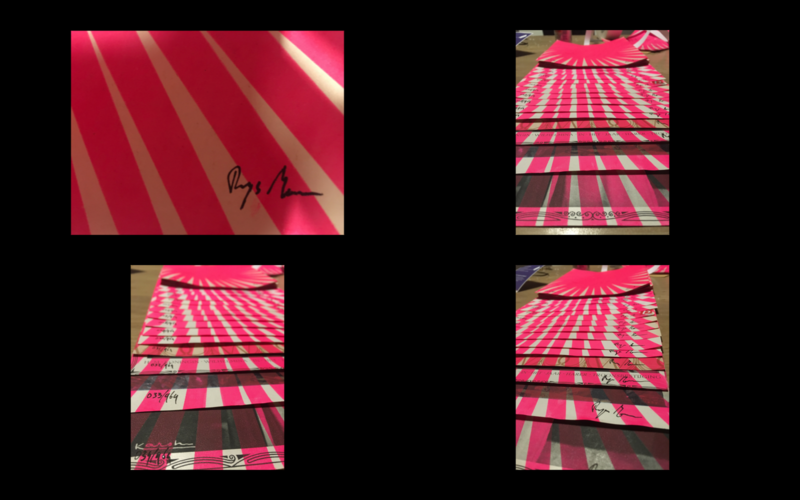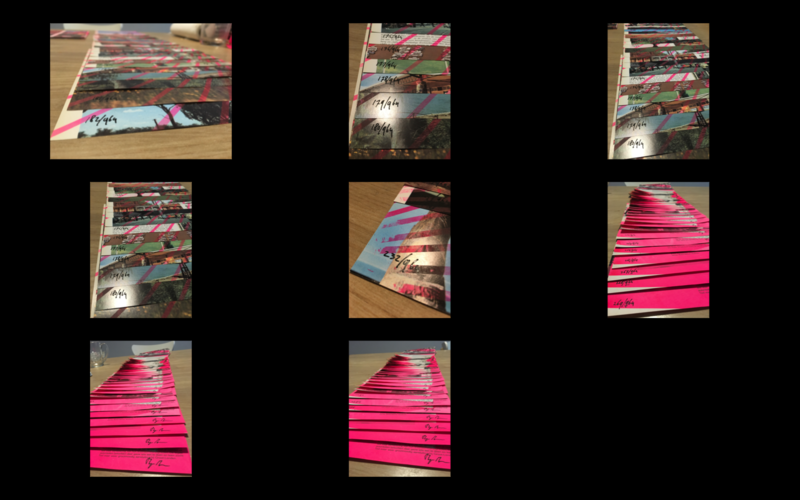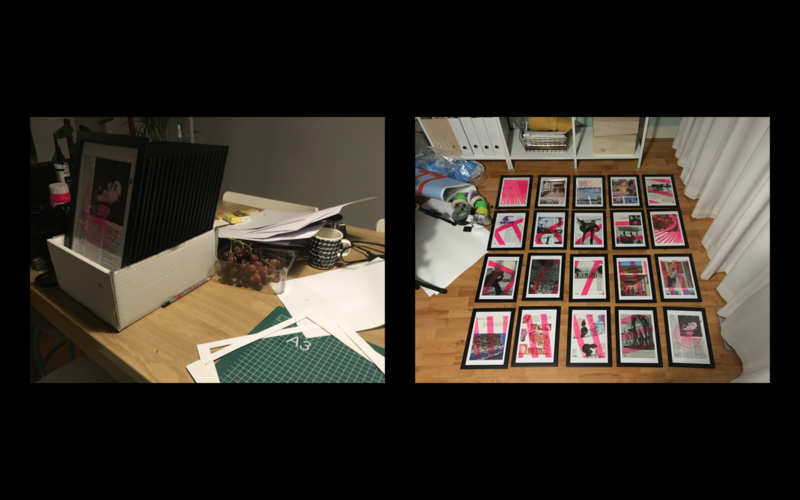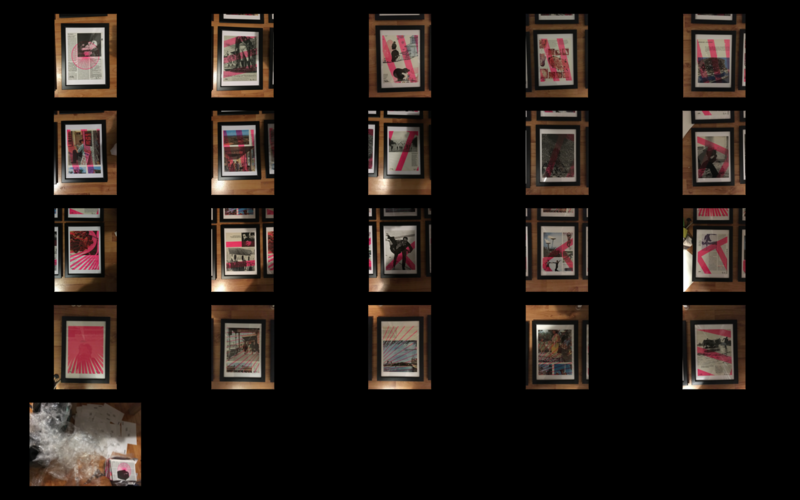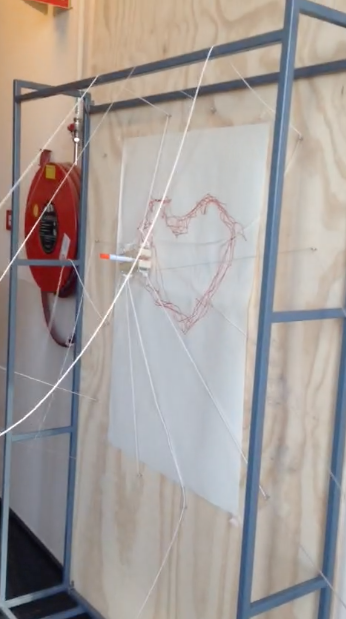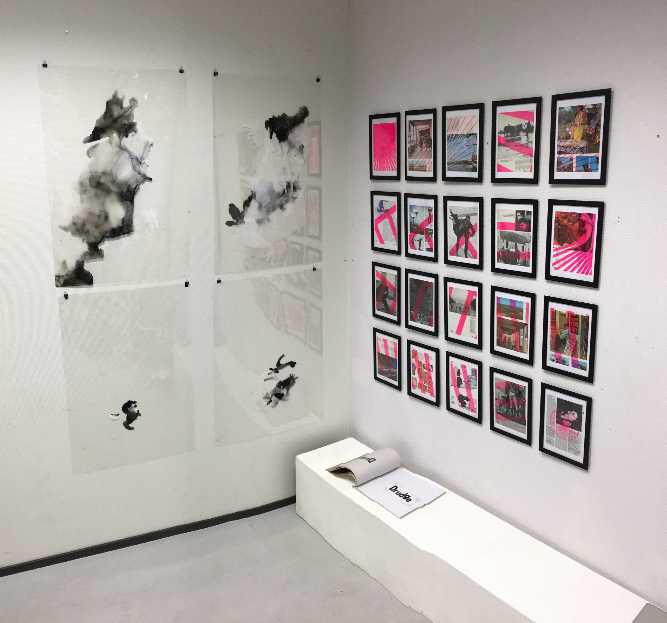Difference between revisions of "User:Harry Senf"
Harry Senf (talk | contribs) |
Harry Senf (talk | contribs) |
||
| Line 1: | Line 1: | ||
'''How to be Human''' | '''How to be Human''' | ||
| + | |||
| + | The first assignment that I worked on was a project about balance. Together with a group we tried to come op with something that you could interact with and work with balance. We started with the balancing of weird objects. But then we thought of a object that in itself was a simple object. It was a balancing table. And people could interact with it depending on the placement of the objects. So instead of forcing normal objects into doing something with balancing. We made something that made every object a balancing object. | ||
| + | |||
| + | To make it more interactive and social, we made it into a standing table with drinks on it. | ||
[[File:Jeanine-alkenah-alex minor balance 7.png|800px ]] | [[File:Jeanine-alkenah-alex minor balance 7.png|800px ]] | ||
| − | |||
(In collaboration with Tom Rentmeester) | (In collaboration with Tom Rentmeester) | ||
| Line 16: | Line 19: | ||
[[File:Schermafbeelding_2017-11-02_om_09.09.55kopie.jpg|800px ]] | [[File:Schermafbeelding_2017-11-02_om_09.09.55kopie.jpg|800px ]] | ||
| + | |||
| + | (In collaboration with 郭欣颐) | ||
| + | In the third project we had to make a booklet about the mind of the machine. We were inspired by cross-section images about machines. We thought that is a way a machine sees an object. It is a way to visualise an object that is 'readable' for a machine. A cross-section image of an object is perfect for a booklet, because every section could be printed on a page; creating a 3d object hidden in a book. | ||
| + | |||
| + | We used an apple, cut it in thin slices, scanned it, printed it and binded it in a booklet. | ||
[[File:IMG_5847.JPG|800px ]] | [[File:IMG_5847.JPG|800px ]] | ||
Revision as of 08:58, 2 November 2017
How to be Human
The first assignment that I worked on was a project about balance. Together with a group we tried to come op with something that you could interact with and work with balance. We started with the balancing of weird objects. But then we thought of a object that in itself was a simple object. It was a balancing table. And people could interact with it depending on the placement of the objects. So instead of forcing normal objects into doing something with balancing. We made something that made every object a balancing object.
To make it more interactive and social, we made it into a standing table with drinks on it.
(In collaboration with Tom Rentmeester) In our second assignment we tried to visualise magnets. Because we had to make a movie we decided that we worked with video and crt as tools, because they produce moving images with magnets. If we could manipulate that in an analog way we could visualise magnets.
As starting point we used a interview by Richard Feynman, who explains that you can't explain how magnets work in a easy way. We devided the interview in three segments and used a different technique on every segment. In the first one we manipulated the screen with magnets, on the second we manipulated the videotape with magnets. And in the third segment we gave in, in trying to visualise magnets; corresponding with the quote of Feynman.
End result: https://www.youtube.com/watch?v=L7wz-CiWrm4
After this we wanted to take the project further. We wanted to make it interactive. The idea was to make a loop: a camcorder captures the screen on a vcr, that shows it on the screen. The idea was that with magnets we could manipulate the tape while it was playing. It didn't work. We tried. We didn't die.
(In collaboration with 郭欣颐) In the third project we had to make a booklet about the mind of the machine. We were inspired by cross-section images about machines. We thought that is a way a machine sees an object. It is a way to visualise an object that is 'readable' for a machine. A cross-section image of an object is perfect for a booklet, because every section could be printed on a page; creating a 3d object hidden in a book.
We used an apple, cut it in thin slices, scanned it, printed it and binded it in a booklet.
Making is Connecting
This course I wanted to create in a different way than I normally do. The major that I follow is advertising. That emphasizes and focuses on concepts. So that what I normally do, that's why I applied for advertising. But I've come to the conclusion that you can limit yourself in your thinking proces, when you can't just randomly create something. Next to that, when I look at my work, I mis a curtain form of art direction. I can't easily make something visually appealing. What I realized, is that when I try a different making proces, it can be visually appealing.
SOOOO! What was my plan for this quarter... I'm gonna make stuff. Period. Without too much of a thought behind it. In the hope that something can come out of that. Maybe an interesting concept, of an appealing visual.
I stared thinking about stamps, and the fact that my bicycle wheels are in a way stamps. I made some examples of using my wheel as a stamp and got tired of it very quickly. I didn't thought is was nice. What is did found interesting was de combination between the ink and the paper, which told different story's.
Using the wheel as an icon I tried to mimic that idea. A made a stamp of the icon of the wheel and printed that on top of something totally different. Facebook profile pictures. When I was done I thought it could be a flipbook. But when I tried to make that, you couldn't really see it.
BUT!
I thought that this idea of an animation could be very nice. And without thinking to long about it I went to the thrift shop, bought some books and cut them in a uniform size.
On which I started screen printing.
Screenpainting was something that I had never done before, so I started with no movement. And while doing that, I tried to think about a way how I could animate the prints.
The way I choose to work, was to use a sheet on which I could draw. On there I layed down the posters, marked te position, printed and went on to the next.
I thought about what I wanted to do with this project. Can it be more than just an animation. Every time I saw a poster that I had printed, I realized that it could work individually. As a visual something, didn't know what.
I thought about what was talked about at studium generale. The difference between autonomous and hetronomous art, and modern vs. post-modern. The definition that they used talked about modernistic art being only form and no meaning, and post-modern being more about meaning and the word outside the art world. Through this I realized that my work was a combination of these two thinks. On one hand we have form, without meaning. Printed on a story, a context. And that I used the neo-dadaistic principle of coincidence to combine them, creating new meaning.
With this in mind I decided that the animation would be a promotion of an art project: '964 Frames'. This project would consist of 964 original pieces that anyone could own. Making it a democratized art work.
Nice story. But I needed to finish it.
It was a lot of work.
I hope you can imagine.
I used the same features that you can find on silk screen prints that you can buy.
After that was done I could photograph every page.
And framed a curated selection.
== End result: ==
http://www.thijsmosterman.nl/964frames/
Group assignment
Because this was a group assignment we wanted to make something that empathizes that. We thought about tools, because that could direct our work towards something we couldn't think of ourself. We started indivudially make a printing tool, and tried to use that to think about something. We thought of the idea to make a printing tool where you need a group to use it. This is what came out of that: A pencit that's controlled by stings who are pulled by the people from a group
A group exhibition where the focus lies on overlay. In posters that can me used as overlayers. A book filled with different printingtechniques which are overlayd on different papers, and tools. And a project where I icon is overlayd onto different contexts.
Why I Make (dutch with the exception of the first sentence):
To explain myself.
Mijn gedachten over allerlei dingen stroken niet met manier hoe normaal gesproken ergens over gedacht wordt. Ik ga anders met mensen om, waardoor die mensen zich ongemakkelijk kunnen voelen. Ik vind het prettig als mensen mij niet kunnen plaatsen. Ik probeer te kijken wat er achter het gedrag van mensen zit, inclusief mijn eigen. Waarom doen mensen zoals ze doen? Wat is grappig? Wat is gemeen? Ik heb interesses die anderen niet hebben. Over de meeste dingen heb ik geen mening. Mijn twee emoties zijn chagrijnig en vrolijk.
Er gebeurd veel in mijn hoofd die ik als vanzelfsprekend zie. Ik heb ook geen referentiemateriaal met andere hersenen. Wanneer ik probeer uit te leggen hoe ik ergens over denk, kijken de meeste mensen mij met een schuin hoofd aan. Mijn humor is raar en mijn gedachtes zijn onnavolgbaar.
Toch denk ik soms een interessante ingeving te hebben. Maar dan wordt het moeilijk. Want blijkbaar werkt het niet als ik dat gewoon probeer te communiceren naar mensen. Als ik een denkwijze heb die ik wil delen, moet ik dat op een andere manier overbrengen. Ik moet een manier verzinnen om iets uit te leggen aan anderen. Want blijkbaar kan ik dat niet. Ik moet nadenken hoe mensen denken, wat hun referentiekader is en hoe ik ergens in hun bubbel kan inbrengen om mijn zienswijze in te planten.
Ik heb beeldtaal nodig. Een verhaal, een concept, een visual met stopping power. En ik zie het als uitdaging om een ingewikkeld proces zo vorm te geven dat het in een oogopslag duidelijk is. Dat is de reden waarom ik advertising ben gaan doen. Omdat het voor mij niet uitmaakt welke beeldtaal ik gebruik. Welk medium het geschikts is om een verhaal te vertellen die wordt gebruikt. Dat kan een fotoserie zijn, een film, een spel of een kunstproject.
Tot voor kort ben ik vooral gefocust geweest op het concept achter mijn werk. Een idee, een zienswijze, een hersenpoep, noem maar op. Dat werk ik uit, en zo vertel ik mijn verhaal.
Alleen merk ik dat ik een stap naar een groot gedeelte van mijn publiek moet zetten om hun tegemoet te komen. Ik ben opzoek naar een beeldtaal die mensen aanspreekt. Het eerste wat je ziet is natuurlijk hetgeen wat je ziet. En niet iets wat je achteraf zelf moet bedenken wat het is.
Daarom ben ik nu aan het maken. Om een manier te verzinnen, om een verhaal in vorm te geven. Dat verhaal kan ik dan vervolgens vertellen met deze beeldtaal. Waarom ik dát maak is om mijzelf te kunnen toelichten.
Daarnaast (wat ik al eerder zei) vind ik het gedrag van mensen interessant. Dus vind ik het ook boeiend om een projecten te maken waarmee ik het gedrag van mensen beïnvloed. Hoe werken mensen. Hoe gaan zij ergens mee om? Hoe zit hun denkproces in elkaar?
Wanneer ik (of een opdrachtgever) wil dat een mens op een bepaalde manier handelt, hoe is dat voor elkaar te krijgen?
Het werkproces is hierbij vergelijkbaar met het proces van het werk wanneer ik mijn verhaal wil vertellen. Ik moet een gedachtegang van een mens infiltreren, een stap in hun richting doen, een gedachtengoed infiltreren, die aanzet tot actie.
Een punt extra dan de andere reden van maken, en die laatste actie maakt het misschien ook wel erg interessant. Dus omdat mijn autonome werk door mijn onduidelijkheid al in de buurt komt van het beïnvloeden van mensen, leidt dat tot een verplichting om daar mee bezig te gaan. Misschien is het toeval, of is dat de reden waarom ik het gedrag van mensen boeiend vind, maar in ieder geval is dat iets wat mij blijft interesseren en dat is een groot onderdeel van het commerciële werk wanneer je dat vergelijk met mijn autonome werk.
Om dit lange verhaal samen te vatten: (TL;DR) Ik kan mijzelf niet goed uitleggen, daardoor visualiseer ik mijn gedachtes. Dit doe ik door goed naar het gedrag van mensen te kijken. Hierdoor vind ik het gedrag van mensen boeiend. Daarom vind ik het commerciële werk ook boeiend, omdat dat dat heel veel op mijn autonome werk lijkt.
